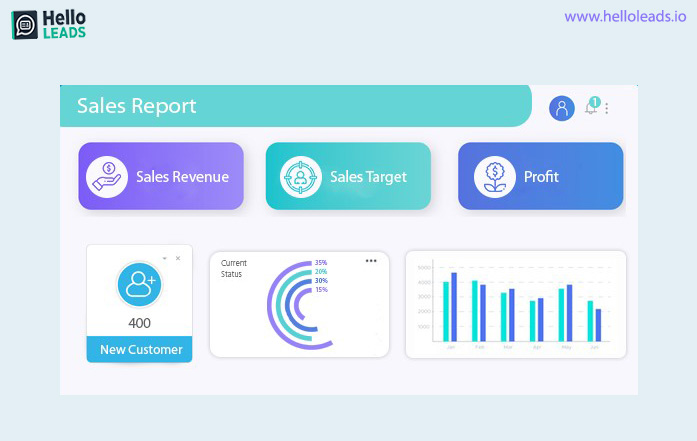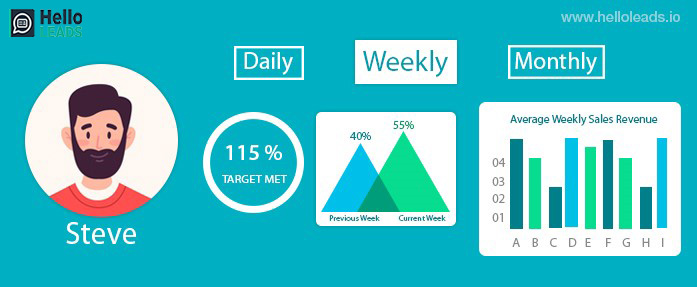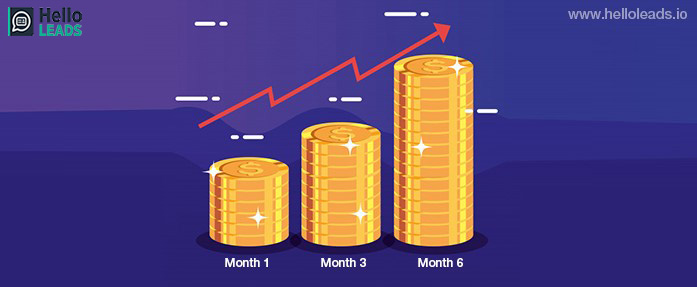
Being an entrepreneur, a small business owner or head of sales, you should identify the opportunities that would accelerate your sales and provide the required impetus to develop your business.
In sales, there are different stages and multiple factors play a key role in the success of your efforts. Though, in general, it is hard to identify the major contributors to sales wins and success, an effective sales report will help you out to solve the mystery.
Sales reports which capture the cause-effect and effort-result relationships, are maps that guide you in your sales journey.
In this small business guide, we will walk you through the importance of sales reports for a small business and outline some of the common sales report templates which you can review and start using for your business.
What is a sales report?
A sales report is a record of all sales activities that have occurred over a specific period of time. A typical sales report provides information about the sales team’s progress and overall business growth.

Sales reports can be prepared daily, weekly, monthly or quarterly depending upon your business needs. There are also annual sales reports. Sales reports measure the efforts, outcome and possible correlation between the two.
Importance of sales reports in the business
For any business, a sales report plays an important role because it provides a clear picture of sales activities and your sales teams’ performance so that you can use it to expedite the growth of your business. It helps in mapping out effective growth strategies, identifying ideal customers and figuring out how to optimize the sales process.
Having a sales report can help you to identify a problem and tackle it before it gets overblown. Also, you can tell where the business is excelling and which area you need to focus more.
For example, sales for a given product or service group can be more than other product or service groups. You can devote more resources to products selling well and products that show more opportunities. Similarly, a specific region or a customer group can promise exponential growth potential compared to others. You can realign your sales strategies to suit such changes in market behavior.
Sales report allows you to focus on the target audience. It gives you an insight on how well you performed during the last quarter, how are we faring in the current quarter and what should be done to achieve more sales or meet targets in the next quarter.
Let us deep dive into some of the sales reports and associated Key Performance Indicators (KPIs).
Types of sales reports
Daily sales report
A daily sales report is a tool used by businesses to extract the daily sales data such as lead follow ups, client conversations, opportunities created, sales generated and many other business-specific as well as sales-related Key Performance Indicators (KPIs).
Top 5 Daily Sales KPIs
1. Number of meetings scheduled
Getting new leads generated every day is good but if your sales team members don’t schedule meetings and nurture them, then the efforts spent in the lead generation are left unused and not leveraged. Tracking the number of meetings scheduled will help you to analyze whether your sales investments and time are going on the right direction.

2. Number of client conversations
When you spend more time talking to customers and understand their business needs, you are likely to generate more results for your business. The learnings from such conversations can help you to fine tune your Sales strategy.
If you know the number of phone calls and in-person meetings handled by each of your salespeople and the sales conversions or deals closed, it will help you to understand which kinds of engagement models are driving you more sales.
3. Lead response time
Responding to your prospects quickly is a secret formula that can increase the chances of closing a deal. For example, if your lead has downloaded an insight or an eBook from your website, which they found helpful for their business and to gather some information to solve their problem, you can reach out to them immediately as soon as they downloaded the file. The reach out can be via email or social media before you even call them.

Suppose, if your lead has filled out a form on your website requesting for a quote or a demo, you should directly give them a call and understand their business needs further.
4. Number of sales opportunities
A sales opportunity is a lead who is qualified and has entered into your sales cycle. You can track the number of sales opportunities and compare it against the purchase volume. This analysis will show you the potential purchase value for the new opportunities so that you can have an understanding of what makes way for a probable closure.
5. Number of new leads
This metric determines how many qualified leads are acquired by each salesperson every day. Knowing this metric will enable you to determine if goals are being reached and whether you need to pitch in to make mid-course correction. .
Weekly sales report
A weekly sales report is used to track sales performance and essential KPIs such as lead-to-opportunity ratio, number of deals won and sales opportunity score.
Top 5 Weekly Sales KPIs
1. Lead-to-opportunity ratio
This metric will help you determine the number of qualified and unqualified leads. Using this metric value, you can determine how many leads you may need to generate to reach your sales target and at the same time, you can have revenue that is predictable. Also you can determine which lead-gen channels provide more leads per unit of money spent.
2. Number of deals won
Knowing the number of deals won can help you identify what is working for you or your top salesperson. You can then use these insights to refine the sales process and train & on-board new sales team members.
3. Average purchase value
The average purchase value measures the average value of each purchase made by your customers. This KPI depends on the type of products and services you sell. You can increase the value of each sales transaction either by upselling clients or selling products or services that have more value.
4. Sales opportunity score
By attaching a score – a standardized value to your opportunities, you can allocate your resources more effectively, say based on opportunities that have higher potential. This metric will help you create an effective weekly strategy and action plan on where your salesperson should focus their time and energy.
5. Customer lifetime value

Customer lifetime value is one of the most important metrics to measure in any small business. It measures the profit your business makes from any given customer over lifetime. It helps in understanding your customers and helps you to make important business decisions about sales, marketing, product development and customer support.
Monthly sales report
A monthly sales report is used to determine sales trends on a monthly basis. It is used to measure KPIs such as sales cycle length, sales conversions and sales performance KPIs.
Top 3 Monthly Sales KPIs
1. Sales cycle length
This metric measures the total amount of time spent for closing a deal, i.e. from your first touch with a prospect till the date of closure. It helps in determining the performance of each sales team member and how effective is your sales process.
If your sales team member is struggling to achieve the target average sales cycle length, you can look at the flaws in the approach, identify areas of improvement for the sales team and take appropriate measures.
2. Sales pipeline
A sales pipeline is an estimate of the opportunities likely to close in a given time period. It allows you to streamline your sales process.
It also provides essential information for accurate forecasting and tracking of sales versus target.
3. Sales conversion report
This metric allows you to see how effectively each sales team member is at converting the leads into customers. It also shows how effective is your overall sales strategy.
By monitoring the conversion rates, you can identify the pitfalls in your sales cycle and rectify it. Suppose if your team is having trouble in converting leads into customers, you can identify the areas of improvement and implement suitable alternatives.
Whether you are a small business or a large corporation, having a sales reporting process is essential to keep your business running and staying competitive.
Share this blog :












Leave a Reply